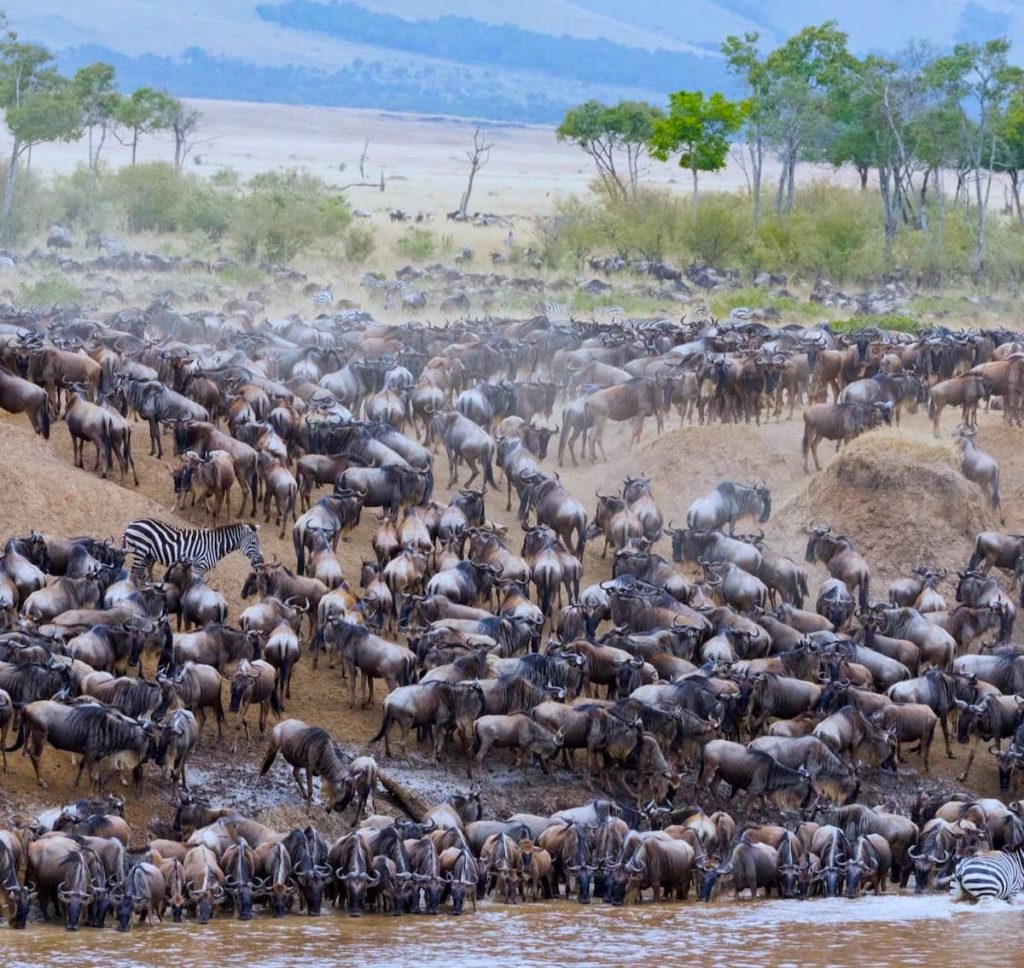Tanzania Migration Safari
Discovering the Great Wildebeest Migration Safari in Tanzania
Step into the heart of Africa’s most spectacular natural phenomenon – the Great Wildebeest Migration. Known by various names such as the Gnu Migration, Serengeti Migration, and Masai Mara Migration, this awe-inspiring event stands as one of the planet’s last great terrestrial wildlife movements.
Beyond the wildlife spectacle, a Migration safari in Tanzania offers a chance to connect with the rich cultural heritage of the region. Encounter the Maasai people, renowned for their traditional way of life and deep connection to the land, adding a cultural dimension to your safari experience.
Best Time to Witness the Wildebeest Migration
The migration occurs year-round, but different stages of the journey offer unique and thrilling experiences.
January – March: Calving Season (Southern Serengeti, Tanzania)
Around 500,000 wildebeest calves are born in the short grass plains.
Predators like lions and cheetahs take advantage of the abundance of easy prey.
Best for: Witnessing baby wildebeest, predator action, and stunning green landscapes.
April – June: The Great Trek Begins (Serengeti, Tanzania)
Large herds start moving north as water sources dry up.
River crossings begin, and dramatic chases by predators increase.
Best for: Seeing massive herds on the move and the first river crossings.
July – October: River Crossings (Grumeti & Mara River, Tanzania & Kenya)
The most dramatic and famous part of the migration—crossing the Grumeti and Mara Rivers.
Huge Nile crocodiles wait in the waters, making for heart-stopping encounters.
Best for: Thrilling river crossings, intense predator-prey interactions, and peak safari experiences.
November – December: Return to the Serengeti
Wildebeest move back south to the Serengeti as rains begin again.
The cycle continues, preparing for the next calving season.
Best for: Watching the herds spread across the Serengeti in beautiful landscapes.
How to Plan Your Great Wildebeest Migration Safari
1. Choose the Right Safari Type
Guided Game Drives: Most common and best for getting close to the action.
Hot Air Balloon Safari: Offers a breathtaking aerial view of the migration.
Walking Safaris: Led by expert guides for a more immersive experience.
2. Pack Smart for Your Safari
Clothing: Lightweight, neutral-colored clothing for game drives.
Camera Gear: Zoom lenses for capturing wildlife action.
Binoculars: Essential for spotting animals from a distance.
Sunscreen & Hat: Protection from the African sun.

Destinations
Tanzania Popular Tour Destinations
Custom Designed Safari
Guide to tanzania Safari
Planning a safari in Tanzania can be an exciting adventure filled with incredible wildlife encounters and breathtaking landscapes. Here's a guide to help you make the most of your Tanzania safari experience:
